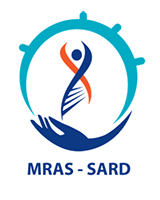Conquering chronic inflammatory autoimmune diseases, one step at a time

When trying to explain inflammation, it can be helpful to use the work of emergency responders as an example. Firefighters in response to an alarm, for instance, mobilize and gather on site to extinguish a fire. Their intervention may cause some hassle for nearby residents and local traffic may be disturbed for a while to allow them to work. But, if efficient, the situation will resolve and things will shortly get back to normal. The same goes for inflammation. Our defense system gets activated to prevent the damage from spreading to other tissues and to eliminate threats of infection. A proper inflammatory reaction is local, and temporary.
In certain situations, inflammation lingers, and even disperses to different parts of the body. That's what we call chronic inflammation, which happens in conditions such as rheumatoid arthritis and lupus. Our own 'firefighters' continuously respond to multiple alarms that may have moved to several organs, while the origin of the inflammation remains obscure. These sustained interventions can eventually cause damage to these organs, which in turn creates even more inflammation. My research group focuses on chronic inflammation in these diseases and on ways to control it. Please visit the Centre de recherche du CHUL for more information.

Systemic Autoimmune Rheumatic Diseases (SARDs), regrouping rheumatoid arthritis (RA), systemic lupus erythematosus (SLE), scleroderma (SSc), mysositis (IMD) and anti-phospholipids syndrome (APS), belongs to the arthritic autoimmune diseases for which symptoms are multiple since inflammation can affect several organs: skin, muscles, joints, heart, lungs, kidneys, blood vessels and nervous system. In Canada, SARDs prevalence is between 2 and 3 cases/1000 persons, but affects 1 woman/100 that are 45 years of age or more. To date, SARDs treatments aim to control disease symptoms and activity while minimizing complications. However, these treatments are not effective for all patients, and they can even lead to infections or additional burden. New therapeutic agents with fewer side effects are urgently needed.
As SARDs study in clinical contexts is limited by the lack of biospecimens associated with relevant and longitudinal clinical information, we created the SARDs Biobank and Data Repository with the following main goal: Support the translational research in SARDs domain. Our informational infrastructure for SARDs is an actual integrated clinical platform that combines multi-dimensional and cross-curricular approach with a patient-centered approach in one tool.

Also, the Patients Intéressés par la Recherche sur l’arthrite (PIRA) group is a patient advisory committee of Arthritis Research Canada (ARC) based in Quebec City. PIRA acts as a bridge between all those involved in arthritis research at provincial and national levels and the general public. The group strives to share knowledge between patients and researchers and make findings easily accessible and understandable.
Facebook page: PIRA - Patients Intéressés en Recherche sur l'Arthrite
Interested to participate in PIRA's walk for arthritis research? Please visit:
http://www.arthritisresearch.ca/support-us/pira-walk
- Date modified: